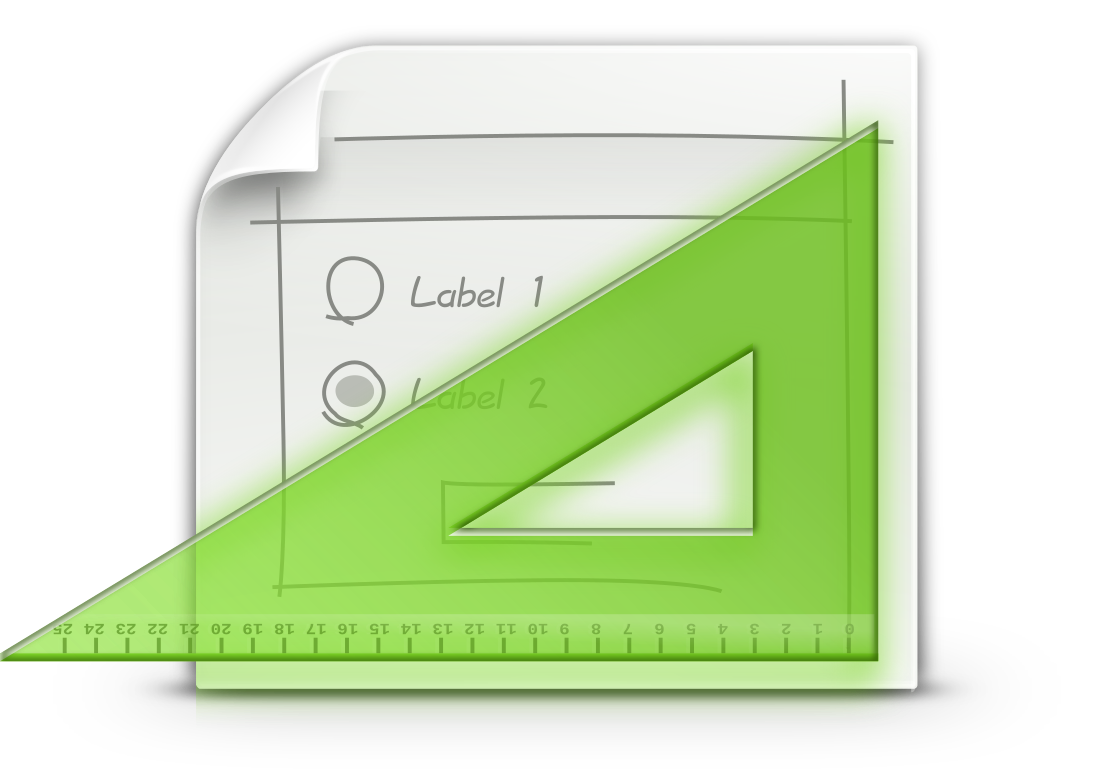Glade Interface Designer
Graphical user interface builder From Wikipedia, the free encyclopedia
Glade Interface Designer is a graphical user interface builder for GTK, with additional components for GNOME. In its third version, Glade is programming language–independent, and does not produce code for events, but rather an XML file that is then used with an appropriate binding (such as GtkAda for use with the Ada programming language).
 | |
 Designing a preferences dialog in Glade | |
| Original author(s) | Damon Chaplin[1][2][3][4][5] |
|---|---|
| Developer(s) | The GNOME Project |
| Initial release | 18 April 1998[6] |
| Final release | 3.40
/ 10 August 2022 |
| Repository | |
| Written in | C, XML |
| Operating system | Unix-like, Windows[7] |
| Successor | Cambalache Interface Designer |
| Type | |
| License | GNU General Public License |
| Website | glade |
Glade is free and open-source software distributed under the GNU General Public License. Glade's development and maintenance ceased in 2022, with the final release on 10 August 2022.[8]
History and development
Summarize
Perspective
The first Glade release, version 0.1, was made on 18 April 1998.[6]
Glade 3 was released on 12 August 2006. According to the Glade Web site, the most noticeable differences for the end-user are:
- Undo and redo support in all operations.
- Support for multiple open projects.
- Removal of code generation.
- Contextual help system with Devhelp
Most of the difference is in the internals. Glade-3 is a complete rewrite, in order to take advantage of the new features of GTK+ 2 and the GObject system (Glade-3 was started when Glade-1 hadn't yet been ported to GTK+ 2). Therefore, the Glade-3 codebase is smaller and allows new interesting things, including:
- Catalogs of "pluggable" widgets. This means that external libraries can provide their set of widgets at runtime and Glade will detect them. In fact, Glade 3 supports only standard GTK widgets; GNOME UI and DB widgets are provided separately.
- The various Glade Tools (palette, editor, etc.) are implemented as widgets. This allows for easier integration in IDEs like Anjuta, and makes it easier to change the Glade UI.
On 5 April 2011, two parallel installable stable Glade versions[9][10][11] were released:
- Glade 3.8: That includes all support for GTK+ up till version 2.24. This version is to serve as a decent migration path for older projects migrating to GTK+ 3.0.
- Glade 3.10: That includes support only for widgets that are still included in GTK+ 3.0 and additionally drops support for Libglade.
On 11 June 2015 Glade 3.19.0 was released. It depends at least on GTK+ 3.16.0. Among many bug fixes this version is the first to support the widgets GtkStack, GtkHeaderBar and GtkSidebar.[12]
GtkBuilder
GtkBuilder is the XML format that the Glade Interface Designer uses to save its forms. These documents can then be used in conjunction with the GtkBuilder object to instantiate the form using GTK. GladeXML is the XML format that was used with conjunction with libglade, which is now deprecated.[13]
Glade Interface Designer automatically generates all the source code for a graphical control element.
The "Gtk.Builder class" allows user interfaces to be designed without writing code.[14] The class describes the interface in an Extensible Markup Language (XML) file and then loads the XML description at runtime and creating the objects automatically. The Glade Interface Designer allows creation of the user interface in a WYSIWYG manner. The description of the user interface is independent from the programming language being used.
Code sketching
Code sketchers are software applications that help a user create source code from a GladeXML file. Most code sketchers create source code which uses libglade and a GladeXML file to create the GUI. Some sketchers are able to create raw code that does not need the GladeXML file. The table below compares basic information about GladeXML code sketcher packages.
| Name | Author | Programming languages | Software license |
|---|---|---|---|
| eglade Archived 13 May 2018 at the Wayback Machine | Daniel Elphick | Eiffel | Eiffel Forum License |
| Gladex | Christopher Pax and Charles Edward Pax | Perl, Python, Ruby | GPLv3 |
| glc | Bill Allen | Python | LGPL |
| ruby-glade-create-template Archived 7 June 2013 at the Wayback Machine | Masao Mutoh | Ruby | |
| Tepache | Sandino Flores Moreno | Python | LGPL |
| GladeToBac | Thomas Freiherr | FreeBASIC (includes headers for GTK-3 and
GTK-2.22.0 / GTKGlExt-1.2.0) |
GPLv3 |
| Glade2FB | Arnel Borja | FreeBASIC | GPLv3 |
| gate3 | F. J. Fabien | Ada | MIT License |
Cambalache
Summarize
Perspective
 | |
| Original author(s) | Juan Pablo Ugarte |
|---|---|
| Repository | https://gitlab.gnome.org/jpu/cambalache |
| Written in | Python |
| Operating system | Unix-like |
| Predecessor | Glade Interface Designer |
| Type | |
| License | GNU Lesser General Public License |
| Website | https://flathub.org/apps/ar.xjuan.Cambalache |
Cambalache (/kambaˈlat͡ʃe/)[15] is a free and open-source rapid application development (RAD) tool[16][17][18] designed for creating user interfaces with GTK 4. It is designed as a successor to Glade,[19][20] with a focus on supporting the GTK 4 library while maintaining compatibility with GTK 3. Cambalache is geared toward developers working within the GNOME ecosystem. Cambalache's design emphasizes the Model-View-Controller (MVC) architecture, ensuring separation between the UI components and the business logic of applications.
The UI editing workspace is driven by a separate process called Merengue which interfaces with Casilda, a Wayland compositor embedded in a GTK widget. This architectural choice improves stability by separating the user interface preview from the main application. This separation enables the system to handle different GTK versions efficiently, ensuring the rendered UI accurately mirrors the application's appearance and behavior.[21]
See also
References
External links
Wikiwand - on
Seamless Wikipedia browsing. On steroids.


